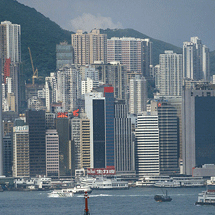By Peter Simpson in Beijing

|
| Within 20 years, 75 per cent of Chinese are expected to live in urban areas. Photo: Curt Carnemark/The World Bank |
Most have moved during two decades of boom in search of economic opportunities, and the historic mass migration from fields to office and apartment blocks ends the country's centuries-long agrarian status.
But the rapid modernisation and demand for improved living standards is piling extra pressure on society and the already blighted environment, experts claim.
With 75 per cent of Chinese expected to be living in cities within 20 years, the demand for more transport, energy, water and other vital infrastructure is set to test resources and city planners.
“Urbanisation is an irreversible process ... It will have a huge impact on China's environment, and on social and economic development,” Li Jianmin, head of the Institute of Population and Development Research at Nankai University told reporters.
In the 12 months from December 2010 to December 2011, a further 21 million arrived in cities – more than the population of Sri Lanka – while rural inhabitants dropped, the statistics show.
Many of those settling down in urban areas are migrant workers – people moving from the country to cities to seek economic empowerment.
Official figures show the rate of urbanisation has gathered pace over the past decades. Only one in five people lived in cities in 1982. By 1990, urban dwellers represented 26 per cent of the total population – a figure that rose to 36 per cent in 2000 and jumped faster over the next decade to reach 51.27 per cent.
Read the full story on the Daily Telegraph website




